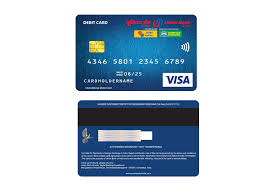Use of ATM card in Daily Life
ATM cards have revolutionized the way individuals manage their finances, providing unparalleled convenience, security, and accessibility. These cards, often linked directly to a person’s bank account, allow users to perform a variety of financial transactions without the need to visit a bank branch, thereby saving time and effort. One of the primary benefits of ATM cards is the ease of cash withdrawal. Individuals can access their money anytime, anywhere, from ATMs located in numerous locations worldwide. This accessibility is crucial, especially in emergency situations where immediate cash is required.
Beyond cash withdrawals, ATM cards facilitate other essential financial transactions. Users can check their account balances, transfer funds between accounts, and even deposit cash or checks at certain ATMs. This range of services empowers individuals to manage their finances more effectively and efficiently. Additionally, ATM cards often serve as debit cards, allowing for cashless transactions at retail stores, restaurants, and online platforms. This dual functionality reduces the need to carry large amounts of cash, enhancing personal safety and simplifying purchases.
The security features of ATM cards are another significant advantage. Modern ATM cards come equipped with EMV chips, which provide enhanced protection against fraud compared to traditional magnetic stripe cards. These chips generate a unique transaction code for each use, making it difficult for unauthorized users to replicate the card’s information. Furthermore, the requirement of a Personal Identification Number (PIN) adds an extra layer of security, ensuring that only the cardholder can authorize transactions. Banks also offer additional security measures such as transaction alerts and the ability to temporarily freeze the card if it is lost or stolen, further safeguarding the user’s finances.
ATM cards have also contributed to financial inclusion, particularly in developing regions. They provide unbanked and underbanked populations with access to financial services, enabling them to participate in the formal economy. Governments and organizations leverage ATM cards to distribute social benefits, wages, and aid, ensuring that recipients receive their funds quickly and securely. This approach reduces the risks associated with cash handling and improves the efficiency of fund distribution.
Moreover, ATM cards support the digitalization of financial transactions, which is a critical aspect of the modern economy. They integrate seamlessly with online banking and mobile payment systems, allowing users to manage their accounts, pay bills, and make purchases through digital platforms. This digital integration promotes financial literacy and encourages individuals to adopt more sophisticated financial management practices.
In conclusion, ATM cards have transformed the financial landscape by offering a convenient, secure, and accessible means of managing money. Their multifunctionality, advanced security features, and contribution to financial inclusion make them indispensable tools in the contemporary world. As technology continues to evolve, ATM cards will likely integrate even more advanced features, further enhancing their utility and reinforcing their role in facilitating financial transactions and promoting economic empowerment.



































































https://www.theyeshivaworld.com/coffeeroom/users/praintreepark
https://camp-fire.jp/profile/praintreepark
https://www.pixilart.com/raintreeparks/about
https://gamebanana.com/members/3552486
https://gist.github.com/gwoodscapesunit
https://community.spiceworks.com/u/somervilleunit
https://glints.com/profile/public/250e44d0-9deb-48b7-a9c8-6640da7df665
https://community.spiceworks.com/u/praintreeparkunit
https://moz.com/community/q/user/prestigeraintree
https://openlibrary.org/people/praintreepark
https://ropas.snu.ac.kr/phpbb/profile.php?mode=viewprofile&u=84825
https://www.theyeshivaworld.com/coffeeroom/users/gwoodscapes
https://www.findagrave.com/cemetery/2806671/prestige-somerville
https://news.ycombinator.com/user?id=somervilleunit
https://www.openstreetmap.org/user/psomervilleunits
https://t.rock-chips.com/en/home.php?mod=space&uid=11459
https://coupons.jiujitsutimes.com/author/praintreepark/
https://jobs.votesaveamerica.com/profiles/4944454-prestige-raintree-park
https://calis.delfi.lv/profils/lietotajs/335321-gwoodscapes/
https://moz.com/community/q/user/woodscapesunitss
https://bookshop.org/wishlists/afa1347223084c9763073d6e0f48c8a8291bc026
https://www.iplocation.net/profile/view/36312
https://derpibooru.org/profiles/praintreepark
https://simplycharlottemason.com/scmforum/users/praintreepark/